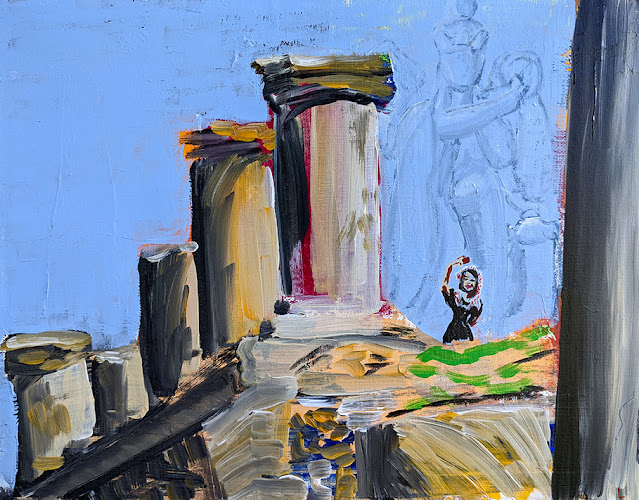The Temple of Anahita in Kangavar is Iran’s largest stone structure after Persepolis. Thought to have been built around 200 BCE or earlier, this UNESCO World Heritage Site was dedicated to Anahita. Anahita was Goddess of the Milky Way, water, and all rivers on Earth.
The temple is "located on a hill, about 32 meters higher than the ground adjacent to it, overlooking the beautiful Plains of Kangavar. With a foursquare plan, stone, plaster and lime were used in its construction. The stone columns of Anahita temple are thicker in comparison with columns found in other ancient monuments of Iran. Stone ditches adjusted the river water and magnificently, directed it to the pond in the center of the temple. This type of water stream in the temple is one of the engineering wonders of that time, displaying this sacred element as beautifully as possible." (source)
Anahita is an old Goddess, "probably existing in some form prior to the 3rd millennium BCE when ancient Persian religion developed in the region of Greater Iran (the Caucasus, Central Asia, South Asia, and West Asia). The Indo-Iranians (Aryans) who eventually settled in Persis had been part of a larger migratory group which included the Indo-Aryans who would settle northern India, and at this time, Anahita and the Hindu goddess Saraswati (presiding over knowledge, learning, music, and wisdom) were probably the same deity." (source)
"At some point, the Indo-Iranians developed their religious belief system to reflect a cosmic clash between the forces of order, light, and goodness with those of chaos, darkness, and evil." (source)
This belief system became Zoroastrianism, often called the "first monotheistic religion." To develop a monotheistic religion from polytheistic roots, it seems that one has to kill or usurp the roles of all of the other deities. The Abrahamic religions likely evolved from Zoroastrianism, which took the first step towards this usurpation, declaring most existing deities to be deavas, evil ones who should no longer be worshipped (source). In ancient times, the Goddess was often head of the pantheon, creator, and bestowed the divine right of kings (source). In Zoroastrianism, this Goddess was Anahita.
In the Zoroastrian scriptures, Ahura Mazda, the new head God, prays and sacrifices to Anahita in order to win her favor to spread his religion (source). This seems to contradict the Zoroastrian claim that Ahura Mazda created all of the deities out of his essence.
In Zoroastrain scriptures, Anahita is described as wearing a cloak is made from 300 beavers, possibly indicating a more northerly origin. Her arms are strong and the size of a horse's thigh (source). Through time, Anahita was demoted from Goddess to angel in Zoroastrianiam, and her appearance changes in artwork of later times.
In my painting, the ghost of Anahita is based on a rock relief at Taq-e Bostan created around 400 CE. The reliefs are adjacent to sacred springs that empty into a large reflecting pool at the base of a mountain cliff, at a campground along the Silk Road, about 75 miles west of the Temple of Anahita at Kangavar (source).




Comments
Post a Comment